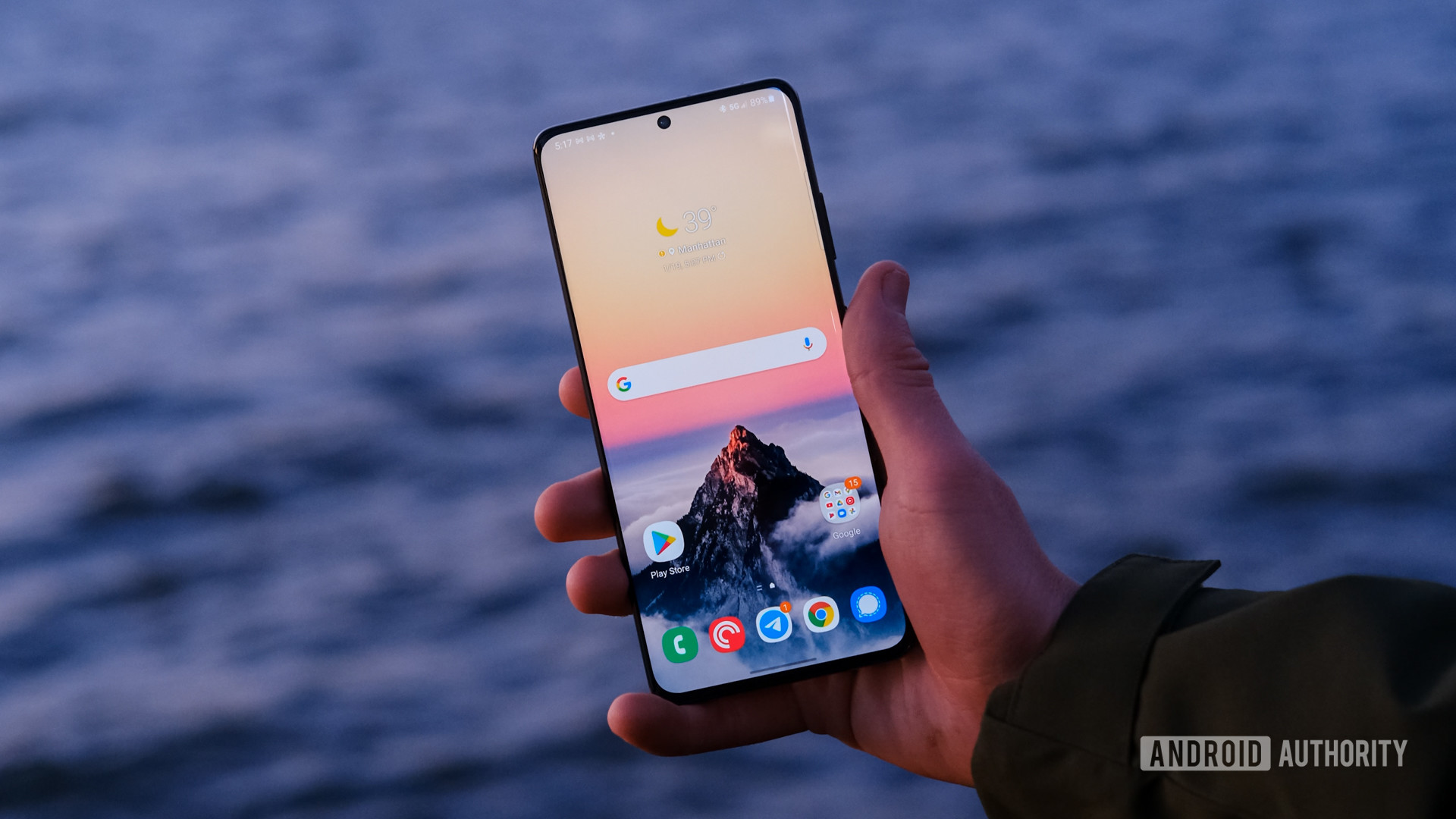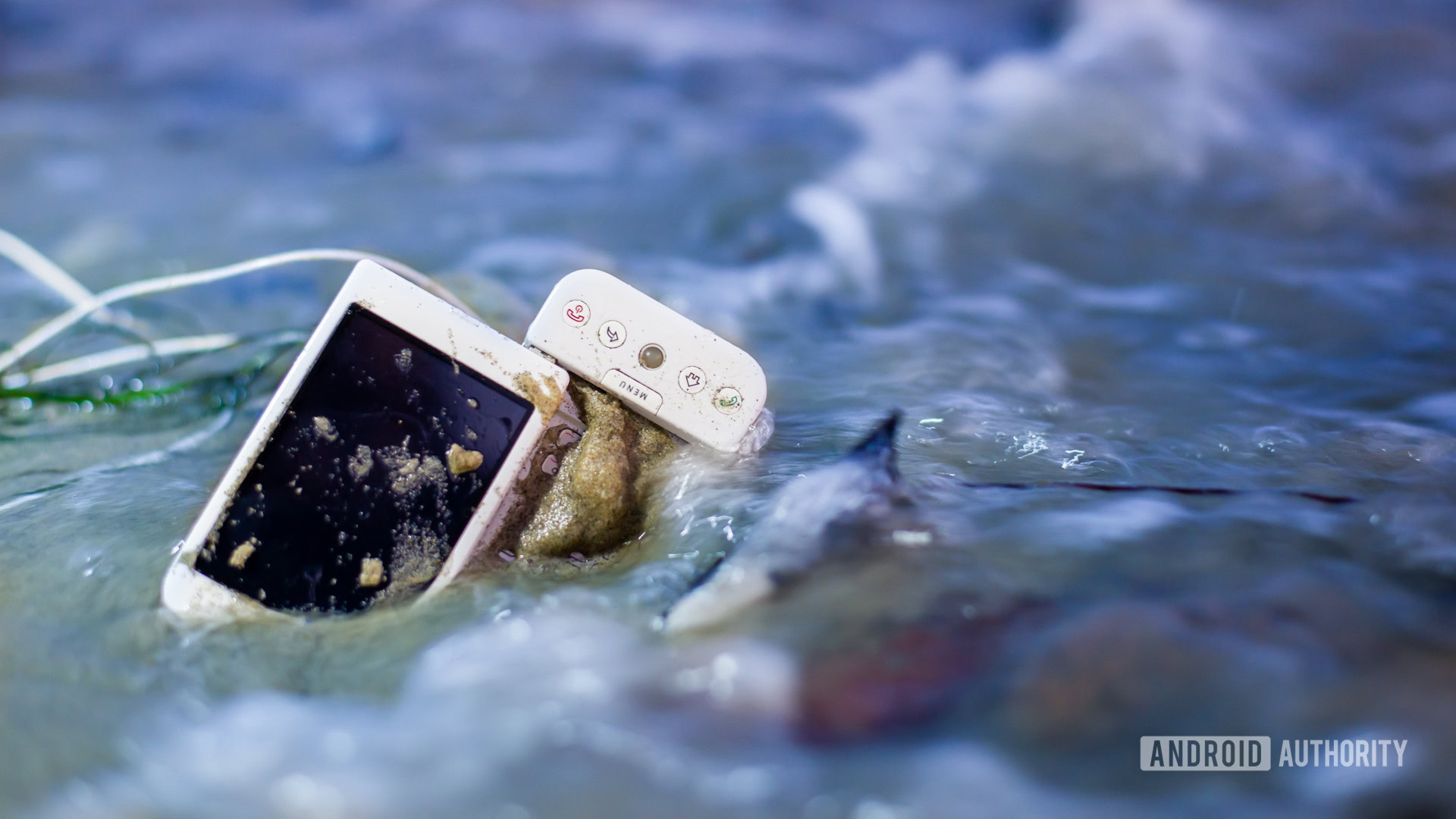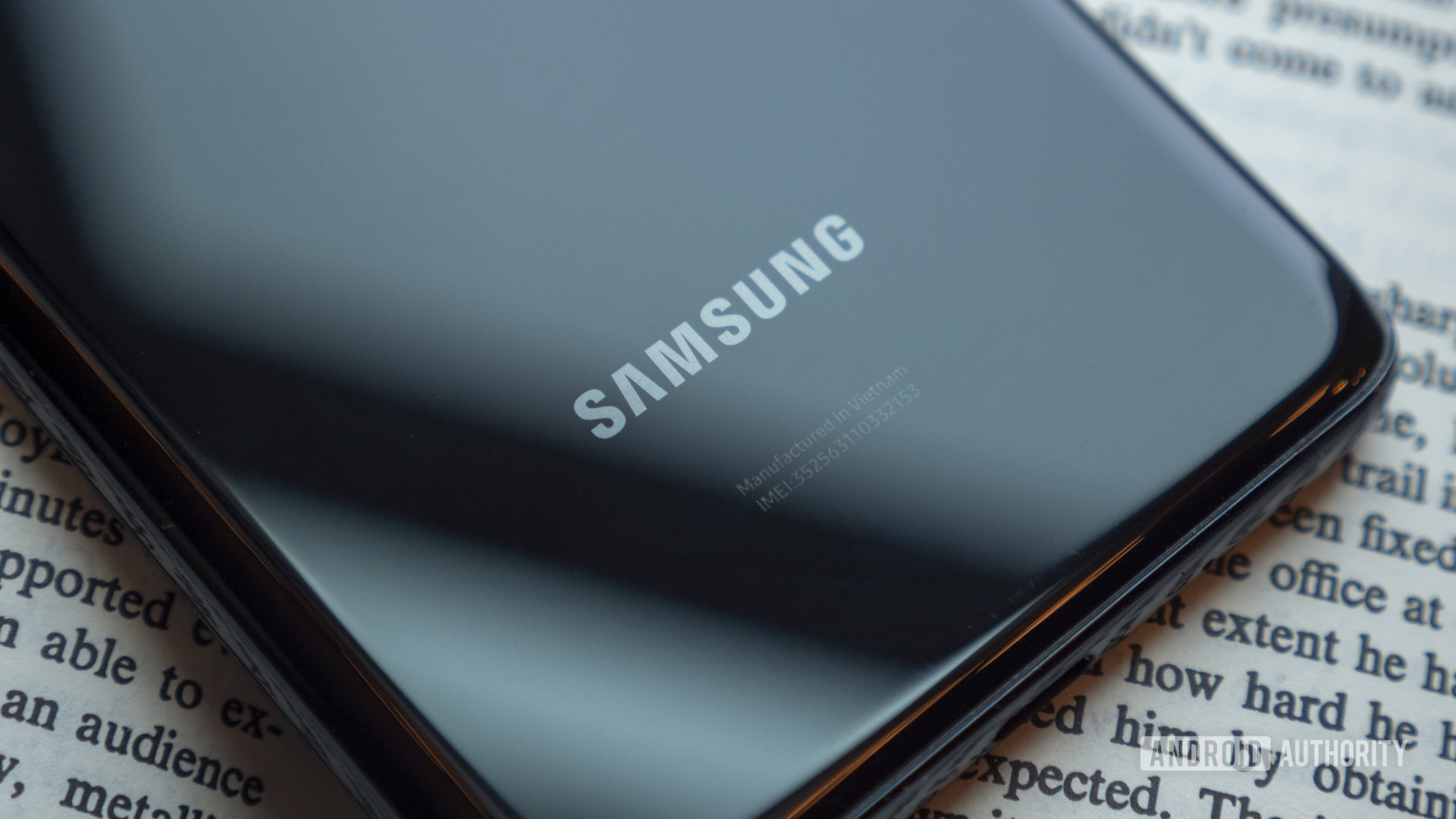Affiliate links on Android Authority may earn us a commission. Learn more.
Is my Samsung Galaxy phone waterproof?

How safe is it to wet your Samsung device? It depends on the specific device. Furthermore, some have better protection against water than others. You should check how your particular device can handle water before you go taking it in the shower, going for swims with it, or simply using it near dangerous water bodies.
Waterproof vs. water-resistant
We must first touch on the differences between waterproof and water-resistant gadgets.
Generally speaking, waterproof phones can handle more water exposure. These can usually survive full submersion for more extended periods. On the other hand, water-resistant phones are expected to survive light exposure to liquids. This may include light rain, sweat, splashes, or quick spills. Water-resistant devices are also often labeled as splash-proof.
Understanding IP ratings
The standard way to determine if your Samsung smartphone is waterproof is to look for its IP rating — if it even has one. IP ratings measure a product’s protection against liquids and solids. These ratings consist of the words “IP,” which stands for “Ingress Protection.” A couple of numbers will follow these two letters. The first one will determine the phone’s protection against solids like dust and dirt. The last number determines the level of liquid protection.
Let’s lay it all out for you:
| Level | Solids (first number) | Liquids (second number) |
|---|---|---|
| Level 1 | Solids (first number) Protected against solid objects over 50mm (example: hands). | Liquids (second number) Protected against vertically falling drops of water. |
| Level 2 | Solids (first number) Protected against solid objects over 12mm (example: fingers). | Liquids (second number) Protected against direct sprays of water up to 15 degrees from the vertical. |
| Level 3 | Solids (first number) Protected against solid objects over 2.5mm (example: tools and wires). | Liquids (second number) Protected against direct sprays of water up to 60 degrees from the vertical. |
| Level 4 | Solids (first number) Protected against solid objects over 1mm (example: small wires). | Liquids (second number) Protected against water sprayed from all directions. |
| Level 5 | Solids (first number) Dust protected — limited ingress of dust permitted. | Liquids (second number) Protected against jets of water from all directions. |
| Level 6 | Solids (first number) Dust-tight — no ingress of dust permitted. | Liquids (second number) Protected against powerful jets of water from all directions. |
| Level 7 | Solids (first number) / | Liquids (second number) Protected against the effects of immersion in water — between 15 cm (5.9 inches) and 1 meter (3.3 feet) for up to 30 minutes. |
| Level 8 | Solids (first number) / | Liquids (second number) Protected against the effects of long periods of immersion in water under pressure. Usually 1.5 meters (4.9 feet) of immersion for up to 30 minutes. |
| Level 9 | Solids (first number) / | Liquids (second number) Protected against high pressure and temperature water jets. The device needs to survive 30 seconds of 14-16 liters directed at the phone from multiple angles, at an 80-degree Celsius temperature. |
Warning: You should still avoid wetting your device!

It’s never truly safe to expose your phone to water, even if it meets the highest Ingress Protection standards. No phone is truly, completely waterproof. If they exist, we don’t know which ones they are.
Sadly, you will only discover if your phone isn’t genuinely waterproof after you damage it with liquids. The problem is that manufacturers don’t usually cover devices under warranty, even if they sell them as waterproof or water-resistant products.
Additionally, many factors play a role in how well your handset can handle water. Even if your Samsung phone is waterproof, chlorine from a pool or salt in the ocean water might constitute a threat. Protective rubber seals can weaken over time. The same seals can erode if a smartphone encounters coffee, soft drinks, or champagne spills.
IP ratings and liquid protection are in place, so your device has a fighting chance of survival if an accident happens. These aren’t a reason to take expensive technology on swims or put them at risk for no reason. You can use a waterproof pouch if you must get your Samsung phone wet, but you should still be careful when using those. Alternatively, you can look at phone insurance options just in case anything goes wrong.
List of Samsung Galaxy phones with an IP rating

With all disclaimers and warnings out of the way, it’s time to see whether your Samsung Galaxy phone is waterproof or water-resistant. You can also use this list as a guide to which phones you can get if you’re prone to dunking your tech in water.
- Samsung Galaxy A52 — IP67
- Samsung Galaxy A52s — IP67
- Samsung Galaxy A53 — IP67
- Samsung Galaxy A72 — IP67
- Samsung Galaxy A73 — IP67
- Samsung Galaxy Note 20 — IP68
- Samsung Galaxy Note 20 Ultra — IP68
- Samsung Galaxy S20 FE — IP68
- Samsung Galaxy S20 5G UW — IP68
- Samsung Galaxy S20 — IP68
- Samsung Galaxy S20 Plus — IP68
- Samsung Galaxy S20 Ultra —IP68
- Samsung Galaxy S21 FE — IP68
- Samsung Galaxy S21 — IP68
- Samsung Galaxy S21 Plus — IP68
- Samsung Galaxy S21 Ultra — IP68
- Samsung Galaxy S22 — IP68
- Samsung Galaxy S22 Plus — IP68
- Samsung Galaxy S22 Ultra — IP68
- Samsung Galaxy Xcover 5 — IP68
- Samsung Galaxy Xcover 6 Pro — IP68
- Samsung Galaxy Xcover Pro — IP68
- Samsung Galaxy Z Flip 3 — IPX8
- Samsung Galaxy Z Flip 4 — IPX8
- Samsung Galaxy Z Fold 3 — IPX8
- Samsung Galaxy Z Fold 4 — IPX8
Note: We’ve only included Samsung Galaxy phones released since 2020 for the sake of relevance. Look at your phone’s official specs if you can’t find it here or if it’s older.
More: The best Samsung phones
FAQs
Most modern Samsung phones have some level of resistance, but not all. Additionally, some devices offer more resistance to water than others. You’ll have to check its IP rating to make sure.
In current standards, the highest level of ingress protection you can get is IP68.
There may be some exceptions, but most manufacturers still don’t cover water damage under warranty, even if phones are IP-rated. You might want to get insurance to make sure you’re covered.
If your Samsung phone has an IP rating with water ingress protection, chances are it can easily handle rain. This is the case even for the less resistant ratings, as rain usually only gets your phone minimally wet.
Even if your phone is waterproof, it’s always good to add another level of protection. We usually recommend getting a waterproof pouch if you’re sure you will be getting your device significantly wet.
Samsung devices are great, but many other phones can take a dunk. Check out our list of the best waterproof phones to look at alternatives from other brands. We also have a list of the best overall Android phones, and most also come with some water protection.